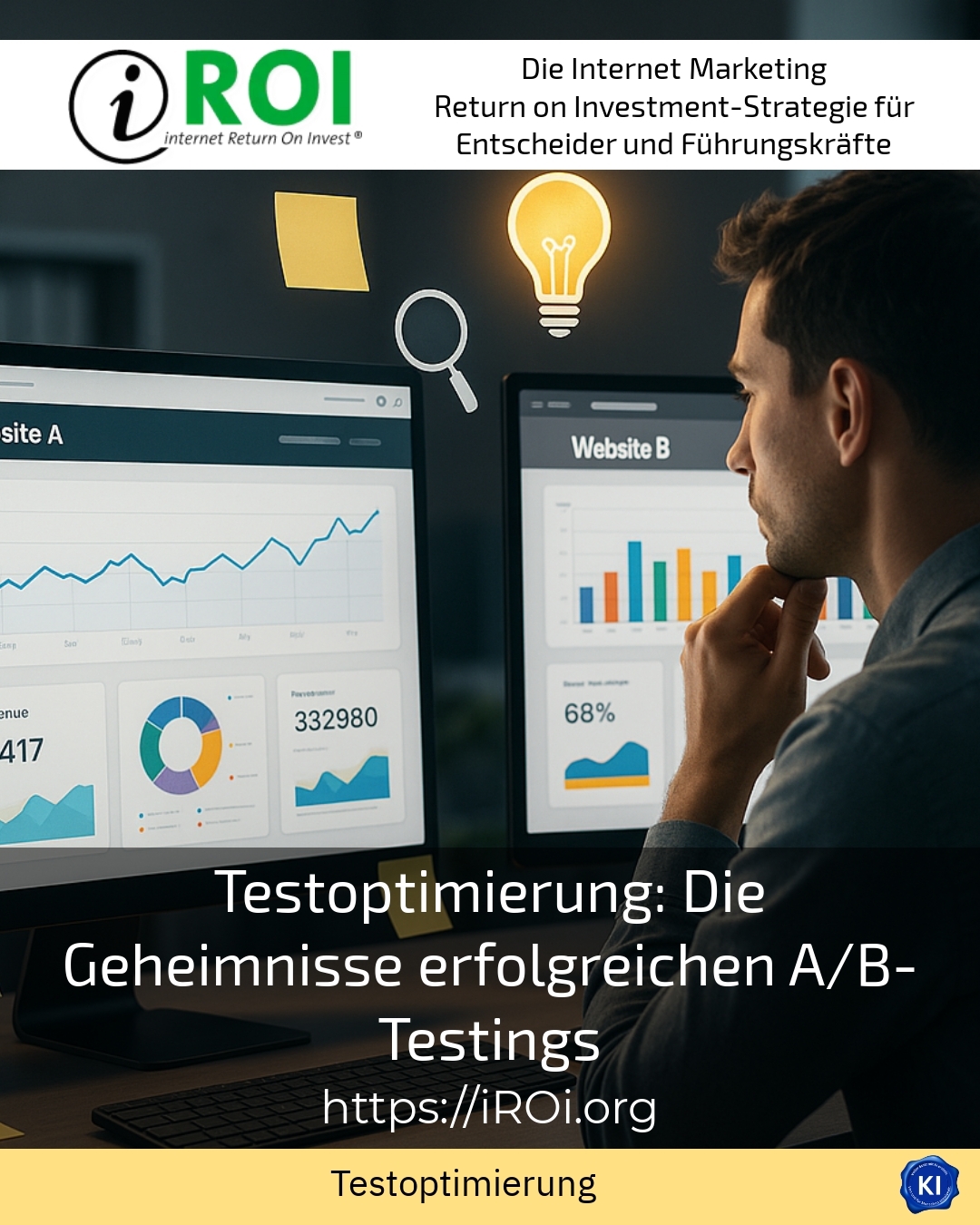Test optimisation is a key component when it comes to continuously improving digital offerings. Many companies are looking for ways to increase their conversion rate, improve user loyalty and measure the impact of individual measures. The secrets of successful A/B testing lie not only in the technology, but above all in the right approach and a clear strategy. In this article, you will learn how to systematically approach test optimisation and achieve real results.
Why test optimisation is important
Test optimisation helps you to make decisions based on data. Instead of relying on gut feeling, you can draw up and test specific hypotheses. Many clients come to us because they are unsure which changes will really have an effect. Test optimisation gives you clear impulses as to where and how you should start.
Practical examples: An e-commerce shop tests various call-to-action buttons to increase the purchase completion rate. A recruiting portal compares two versions of a job advert to generate more applications. A newsletter provider checks whether a different subject line leads to more openings.
Test optimisation is not a one-off act, but a continuous process. This is the only way to achieve long-term success and adapt to the changing needs of your target group.
Test optimisation: The steps at a glance
A successful A/B test starts with a clear objective. What do you want to improve? Do you want more form submissions, higher click-through rates or fewer bounce rates? Without a defined goal, the results are difficult to interpret.
Then formulate a hypothesis. For example: „If we make the CTA button red instead of green, the click rate will increase.“ Or: „If we make the headline more concise, the number of newsletter subscriptions will increase.“
The next step is to create the test variants. You should only change one variable at a time. For example, test the colour of the button, but leave the text and position unchanged. This way you can be sure that the results are attributable to the tested variable.
Practical examples for test optimisation
An online shop tests different product images. One variant shows the product in a studio, the other in everyday use. The results show that the everyday images lead to more purchases.
An education provider compares two versions of a landing page. One version contains more customer testimonials, the other less. The version with the customer testimonials receives significantly more enquiries.
A software company is testing various email subject lines. The variant with a personalised approach leads to more opens and clicks.
Test optimisation: Best practices
To implement test optimisation really successfully, you should follow a few tried and tested methods. Start with small, controlled experiments. Test individual elements first before making major changes.
Prioritise your test ideas. Not every hypothesis is equally important. Estimate the expected impact and the effort involved. This allows you to prioritise the most promising tests first.
Analyse the results thoroughly. Don't just look at the superficial figures, but delve deeper. What does the data tell you about user behaviour? What correlations can be recognised?
Avoid typical mistakes
A common mistake is to test too many elements at the same time. This leads to ambiguous results. Always concentrate on one variable.
Another mistake is to stop the test too early. The results must be statistically significant before you make a decision.
Make sure that the test groups are large enough. If the traffic is too low, it will take a long time before meaningful results are available.
BEST PRACTICE with one customer (name hidden due to NDA contract) A client from the e-commerce sector wanted to improve the conversion rate of its checkout page. Together with iROI-Coaching, we drew up and prioritised various hypotheses. We first tested the position of the payment button, then the wording of the information texts. After several test cycles, we were able to increase the conversion rate by over 20 per cent. Clients report that they are now much more confident in their decisions and can take targeted action.
My analysis
Test optimisation is a powerful tool for continuously improving digital offerings. With a clear strategy, systematic approach and regular analysis, you can achieve real results. Many clients report that they not only achieve more success through test optimisation, but also develop a better understanding of their target group.
iROI-Coaching supports you in test optimisation projects. Together, we will find the best approaches for your individual challenges and implement them in a targeted manner.
Further links from the text above:
10-point plan: Getting started with A/B testing
Best practices for A/B testing Reference
For more information and if you have any questions, please contact Contact us or read more blog posts on the topic internet Return on Investment - Marketing here.
















